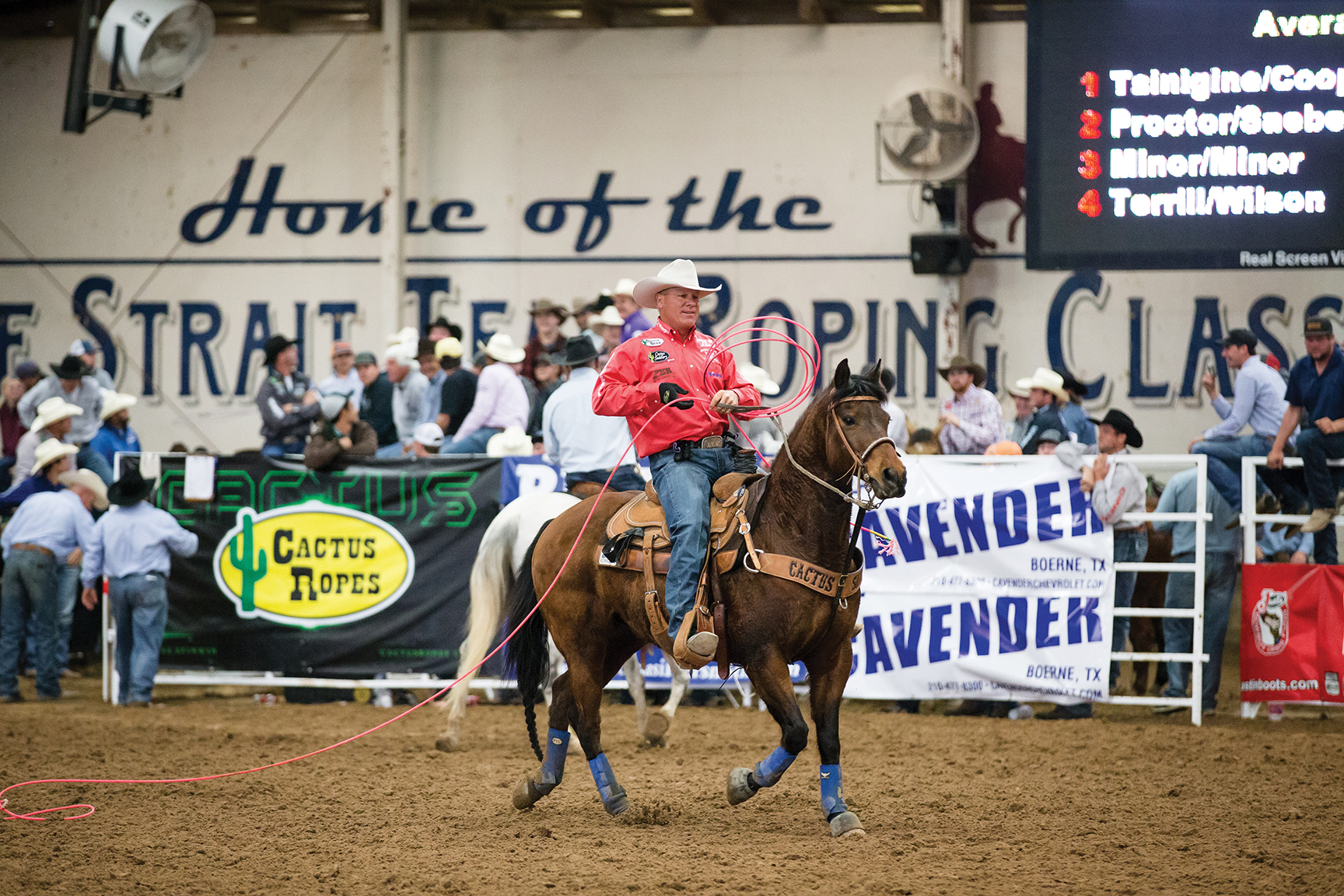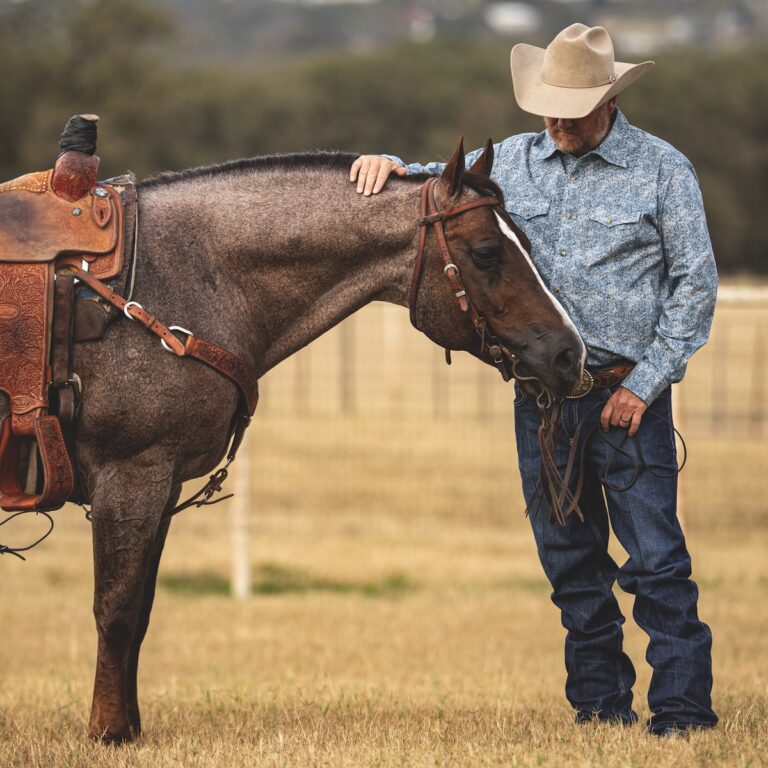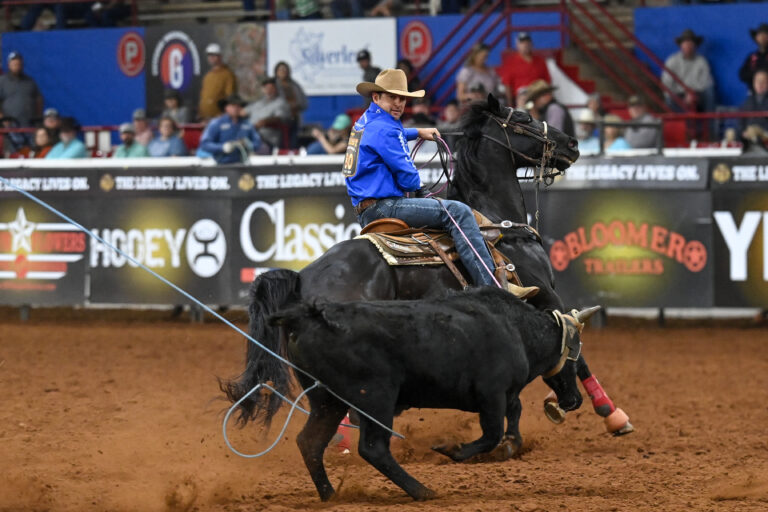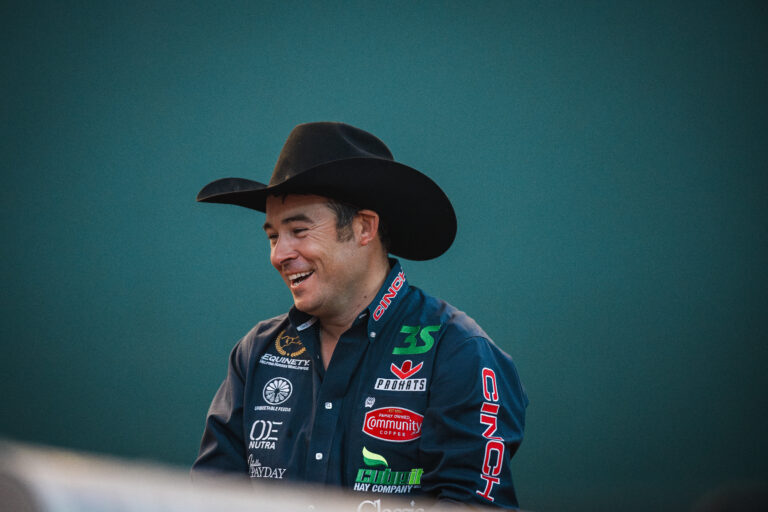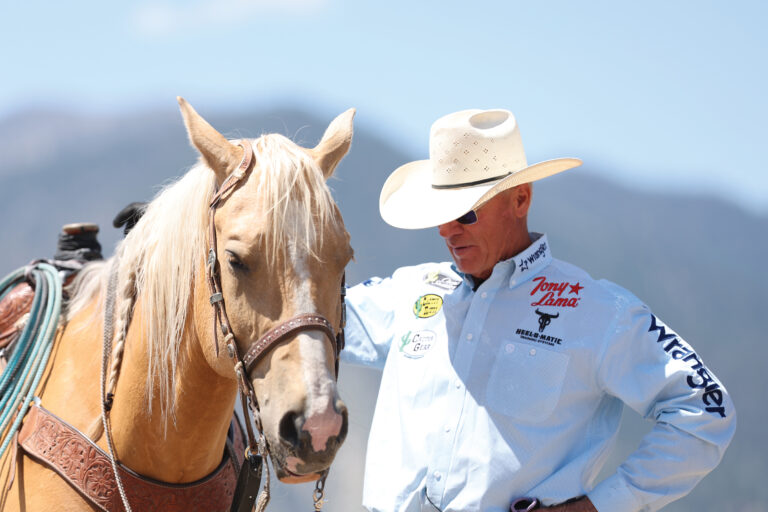It may have been 30 years ago, but Equibrand CMO Billie Bray remembers that May morning when she drove the industry’s first shirt with a patch to the Windy Ryon Memorial—revolutionizing endorsements forever. Hall-of-Famers like Mike Beers and Jake Barnes sporting the logo of Classic Ropes meant the industry exploded with rumors about who was paying who, she recalls.

Today, navigating those relationships is as tricky as ever for companies shelling out big dollars to align themselves with—and trust—certain headers and heelers with their reputations.
There have always been two kinds of endorsements: friendship (someone wants to help a roper get down the road) and business (a rope company wants to profit from a roper’s visibility).
Complicating that are the wildly varying budgets of today’s handful of rope companies. Deals vary just as much, accordingly. Signees are bound to get free ropes, but “TV ropers” tend to get paid, too. Some companies offer stipends throughout the year while others only offer bonuses if you make the NFR. Patches of certain logos are given out like candy, and others can be nearly impossible to get.
Recruitment varies, too. Some companies pursue ropers while others wait to be contacted. Every single team roper wants a deal—but every rope maker is fighting for the attention of just 60,000 rope buyers. Today’s rope companies know better than to bash each other’s products, and they’re careful not to entertain any new prospects already wearing patches (they say).
Heavy hitters
Ever since Kory Koontz became synonymous with Classic and Clay O’Brien Cooper plugged Cactus, a couple of “Bs” in this industry have pulled the strings on just who gets their deals. For decades, Bray and the team at Equibrand have decided who represents 1986-born Classic and Rattler, while Barry Berg has been aligning ropers with Cactus, founded in ’91, and Relentless. Bray’s approach is rooted in deep mutual respect while Berg’s is all about passion.
“Endorsees are on our team and we’re on their team,” said Bray.
If a Classic endorsee posts anything on social media, her staff shares it and provides a ton of complementary content. If they need her to put a good word in for them with another company, she’s on it.
“If I see any opportunities, I send them their way,” she said. “I’m loyal to the endorsee and want them to be successful. The most important part, to me, is being encouraging and helping set them up for life after rodeo.”
Bray stresses that the more endorsees can do podcasts and give interviews and post tips and generally expose themselves, the better it will be for them in the future. By saying yes to speaking engagements and interviews, you can become a better endorsee, which leads to more opportunities.
“The more you can get in front of a camera, even if it’s just swinging your rope and practicing, the better I like it,” said Bray, whose son Paden Bray was the 2020 NFR average champ with Erich Rogers. “By having ropers get better at media, that just helps the sport. Journalists just want to know what’s going on out there. You can’t be interviewed enough, because it’s good for our sport. And you can’t wake up one day and all of a sudden be good at it. Represent our sport and set yourself up for the future at the same time.”
Development deepens
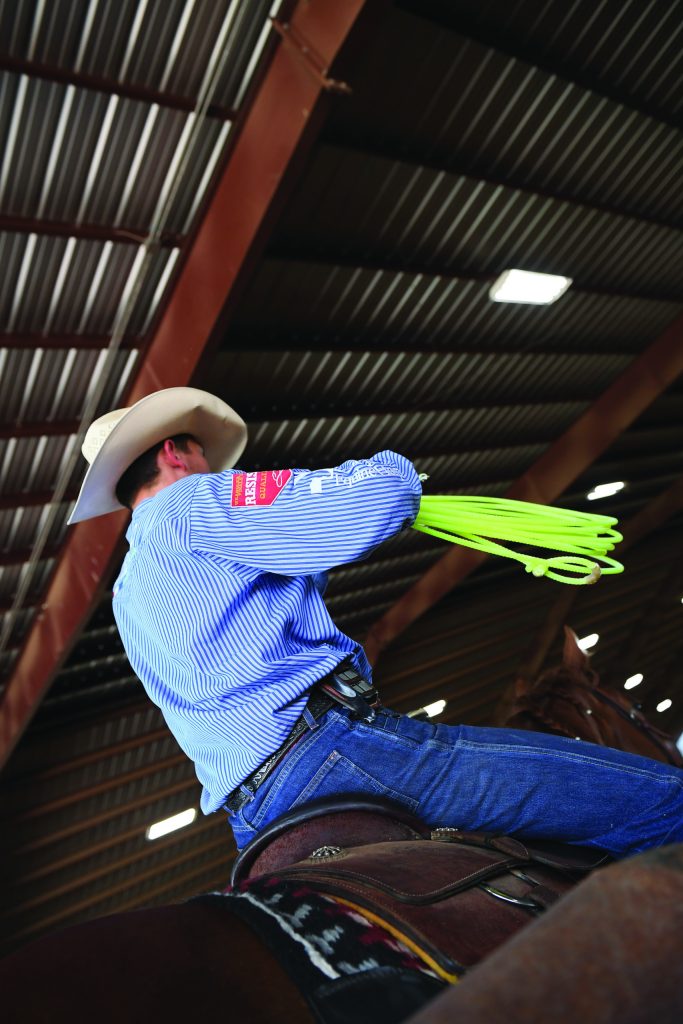
Over at Cactus, Berg wants their ropes to inspire endorsees, who then rope better and inspire others to use the ropes, too.
“If an endorsee leaves Cactus, it means I need to get better,” said the longtime Cactus production manager. “It’s up to the rope company to inspire the endorsee with the product. It’s not up to the endorsee to stay if they don’t believe [in the product].”
Berg acquired Jake Long right out of college, even before Cactus ropes had a core. In fact, signing ropers really young has been a boon. Endorsee Riley Minor was 12 years old when Berg first met him, and they’ve talked weekly every year since. Corporate owner Dennis Carroll signed Tennessee native Chad Masters when he first saw him at a jackpot back East. Berg said he’s still sending ropes to 1990s NFR heeler Jeff Medlin, so Cactus has backed Jeff’s kids, Logan and Abby, as they developed, too.
“Logan is now one of the best heelers in the world, and he believes,” said Berg. “Belief in the product just oozes out of him. The cowboy must be passionate about the rope to sell the rope to people.”
Endorsements also affect product quality, according to Berg, who tweaks ropes for his individual signees to have less kick or more stretch, for instance.
“We learn from them so much,” said Berg, who added that signing Trevor Brazile in 2009 was a game-changer. “He’s the king. He knew more about nylon than I knew, and it came full circle because I could do stuff at the factory that inspired him. If you want to talk about moving the needle as an endorsee, that’s him. He helps us daily.”
Berg figures he communicates the most with Masters, who for years has kept notes for Berg about how his ropes performed after each trip to Vegas. In Masters’ garage are ropes Berg sent him years ago.
“If you get inspired, you’ll be inspired for a while,” he said. “These guys are scientists when they search for what they need to win. There are only a few searchers out there. Jake Long’s a searcher, for sure.”
Lone Star, too, has used Patrick Smith to develop ropes, including the Thunderbird he used to win the ’22 NFR, while Coleman Proctor was involved in the final edition of his favorite five-strand, the Fever.
It happens across the board, from back when Hall-of-Famer Bobby Harris worked with King Ropes to the more recent Top Hand Ropes, who’ve gotten invaluable insight from Tyler Magnus and now Speed Williams. Plus, Top Hand boasts veteran rope maker Curt Matthews, who made ropes for several legends starting in 1986.
Standards affect impact
Gambling money on tomorrow’s superstars is much tougher than it was in the 1990s when the same couple of teams always went highest in the calcutta. Sixty out of 100 teams entered today could win first! Plus, new tournament rodeos increase the luck of the draw, making it tougher for the same contestants to win. That creates a much larger pool of prospective endorses.
But at the same time, when you look around at your local high school rodeo and dozens of kids are wearing patches, how does that impact endorsement dynamics? Bray feels like her veteran endorsees have sacrificed their lives, literally, to have achieved what they have, so she’s not inclined to patch just anyone.
“We want kids to become the best they can be, so it shouldn’t hurt their feelings if it takes a while,” she said. “They’re going to have to get that good, because everybody else did. Everyone abides by the rules.”
That’s a tough sell in our participation-trophy culture. And there are other considerations, too, including that giving away product means fewer retail sales at stores and fewer sales for vendors at big ropings.
General Manager Coy Upchurch of Fast Back Ropes, founded in 1995, keeps his endorsee pool fairly small, although he said they’re absolutely necessary to a rope company. Speed Williams made Fast Back famous when he revolutionized team roping with the Mach III. And now Clay Tryan has become the winningest header of all time with the Centerfire 2.
“We don’t have a lot of endorsees,” said Upchurch, who credits Cesar de la Cruz with pushing the ropes in his latest career as a clinician and coach.
Tryan is obviously more comfortable getting in front of a steer than a camera. But his stats don’t lie. Therein lies the rub—do you bank on a guy who wins or a guy who talks a lot about his ropes?
“It’s hard to measure how many sales will be generated from an endorsement,” said veteran rope maker Guy Alford of Lone Star Ropes. “This year will be a good test of that, since Tanner [Tomlinson] helped us create our new Frio rope and won the NFR average with it. It’s still hard to tell, really.”
Endorsing the future

Home-schooling and high-dollar jackpots have young talent oozing out of the woodwork, and rope companies want to land the best fresh meat.
There was a scuffle two years ago over then-14-year-old Denton Parish, who banked more than $130,000 at #12.5 and #14.5 ropings with Tyler Tryan and Hali Williams that year. Lone Star got him. Still, plenty of rising stars have companies interested, including Jr. BFI champ Denton Dunning, Tryan’s three sons and Navajo sensation Trey Begay.
But it takes a special kid to sport a logo for Classic—an old-school company whose approach is “you have to earn it.” Youngsters don’t get patched just because they can rope fast.
“I have a lot of respect for guys who wear our patch and the blood, sweat and tears it took for them to get it,” Bray said. “Anyone new that we sign has to fit in.”
At any age, if you rope well and want a deal, what does it take to get one? Talk to the endorsement person at the company you like about the criteria, or even pick the brain of an existing endorsee, suggested Upchurch. Be prepared to say yes to requirements such as those in Fast Back’s contract about attending photo shoots, signing autographs and helping with social media. And Cactus expects you to act inspired.
“I want an endorsee to explain the rope to a No. 5 and walk him or her through the ins and outs of the rope,” Berg said. “It’s not only for our benefit, but for the one who gets the information. It’s just part of the growth. Some people will walk right by a guy talking about ropes, but some will join the conversation. Then you can change lives.”
When you’re representing, it goes without saying to never chew out a flagger or the chute help. Wear your cowboy hat, walk around like a professional and get the limelight because your rope is great—not because you caused trouble. When people ask about your wins, credit your amazing rope. And make sure you get your picture taken wearing the logo.
“Riley Minor is the best in the world at that,” Berg said. “I bet he had logos under his suit when he got married. He even wore them in Vegas when he missed the NFR.”
And even if you never rope on TV, realize that some companies don’t limit their endorsements to NFR qualifiers.
“Some of our best endorsees are not high-numbered ropers,” said Upchurch. “They’re respected in business or as horse trainers, and they’re really good about pushing the product.”
After all, the product is light-years away from what it was in 1993—and so is competition for endorsement contracts.




